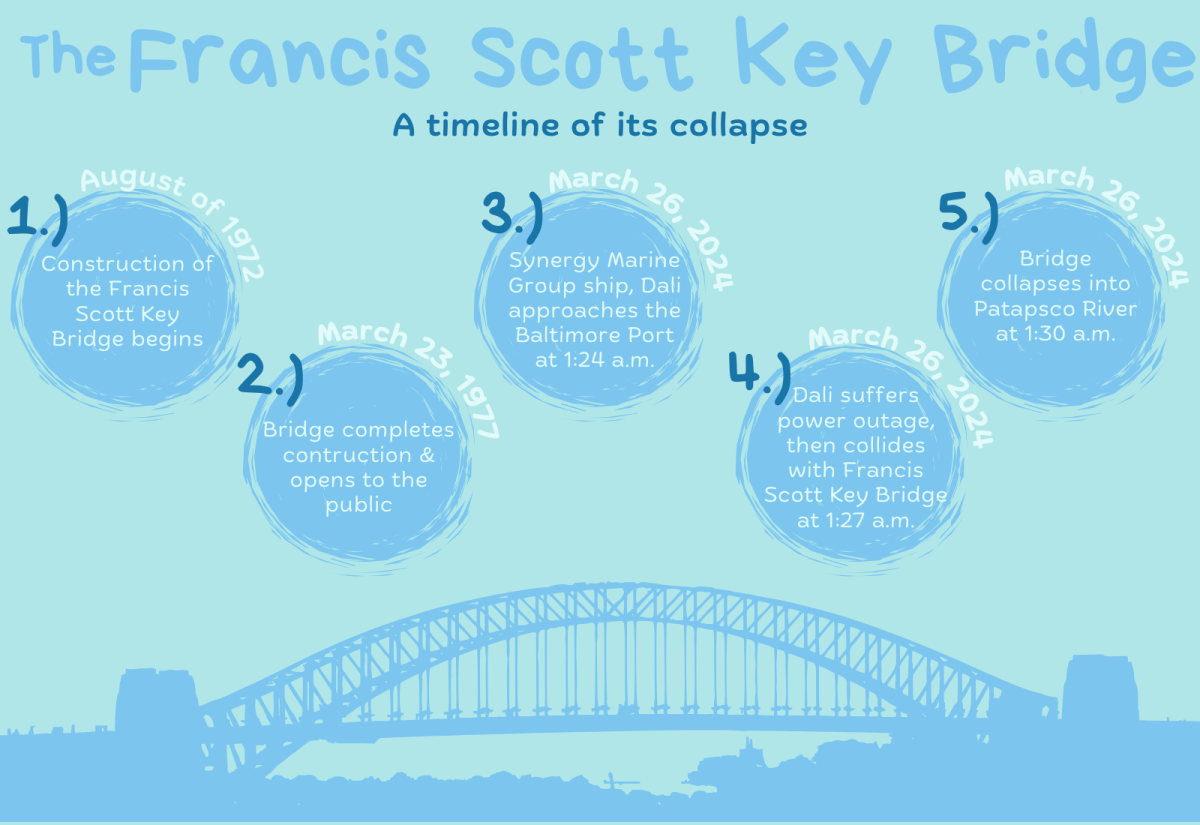The Francis Scott Key Bridge, located in Baltimore, Maryland on Interstate 695, originally began construction in August of 1972. With construction finished on March 23, 1977, the bridge was finally completed and open to the public. It turned out to be 1.6 miles long.
The Francis Scott Key Bridge got its name from Francis Scott Key, who wrote the National Anthem, “Star Spangled Banner.” The bridge was named after him as a tribute. The bridge offered transportation for citizens and tourists from all over the country. Roughly 34,000 vehicles traveled across the bridge each day, whether it was to get into Baltimore, to work or a family vacation. The bridge was the only major traffic roadway through Baltimore that allowed hazardous materials to cross. Other major waterways and roadways do not allow transportation of such items.
The Synergy Marine Group is a Singapore-based shipping company that owns around 660 container ships. It is managed worldwide and is used to transport shipping containers to ports around the world. The ship which is named “Dali” left its port in India to make its way to one of the country’s busiest ports, the Baltimore Port, but its final destination was Colombo, Sri Lanka. The ship was being operated by 22 crew members. The Dali was around 984 feet long and weighed in at 95,000 tons when it was empty, making it a very large vessel. The ship could carry up to 10,000 20-foot shipping containers. On its route, it was carrying around 4,700 containers of goods.
On its way through the Baltimore Port, the Dali was approaching the Francis Scott Key Bridge around 1:24 a.m. on March 26. Around 1:25 a.m., the ship appeared to suffer a complete power outage shutting down all lights and engines. At 1:27 a.m., the vessel had officially collided with the Francis Scott Key Bridge. Less than a minute later, a Maryland Transportation officer called for the traffic to be stopped on both sides of the bridge. At 1:30 a.m., the bridge had fallen and plunged directly into the Patapsco River.
Before the collapse of the bridge, eight construction workers were sent out to the middle of the bridge to work on it. They were still on the bridge when it collapsed. Two out of the eight construction workers were found directly after the collapse and rescued. There were Sonar detectors that showed there were still cars in the water, so the search went on for a little longer. With no luck finding any other survivors, the other four workers have been presumed dead. No others have been found. Best wishes have been sent out to the victims’ families because of this tragedy.
With the collapse of the bridge, there have been many questions about the impact this will have. While officials have been working on cleaning up the debris out of the river, the question still remains; what is next? It is likely to expect a shortage of deliveries from other ships due to the debris in the water, which means there could be a shortage of products and other necessities that get delivered to the port. It is still being decided whether they will be rebuilding a brand-new bridge or replacing the destroyed one. Officials noted that it took them five years to build the original bridge.
“During the time of unimaginable tragedy, we have also seen our community rally around one another and lift each other up. I am committed to making sure those who are impacted know how to get the support they need while we reopen the channel and get the Port fully operational,” the governor of Maryland said, according to a statement from the office of Governor Wes Moore.



